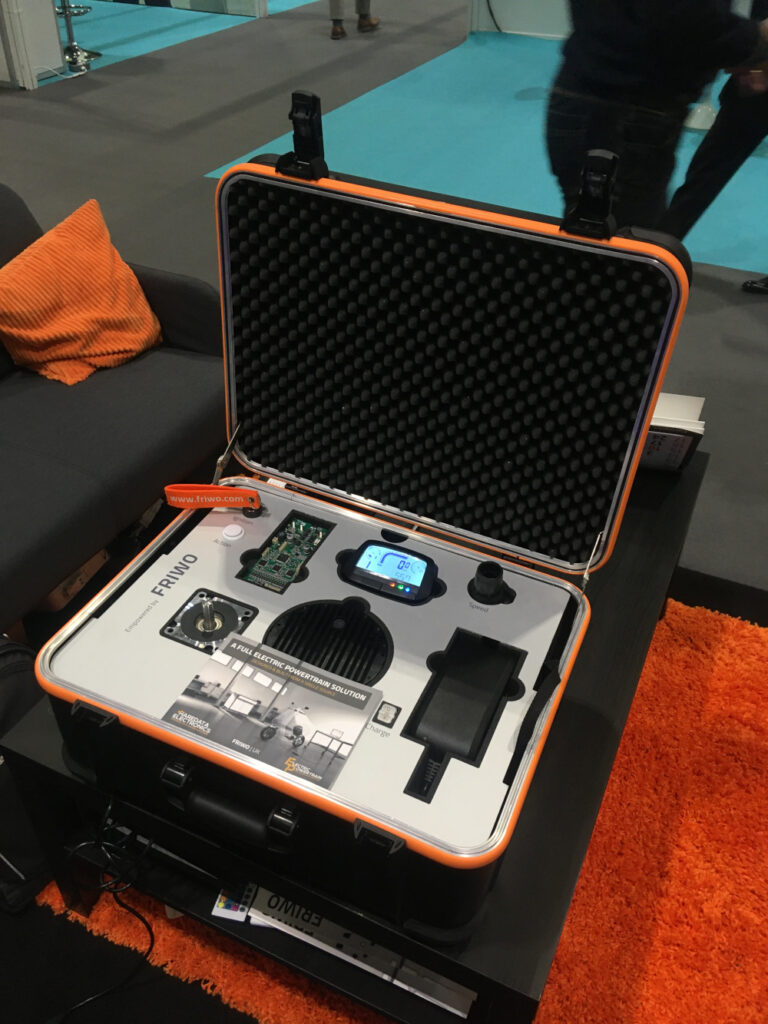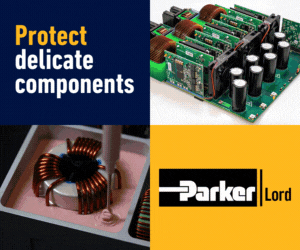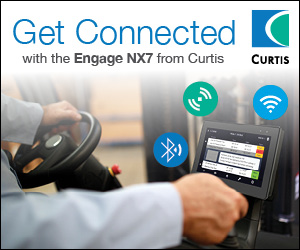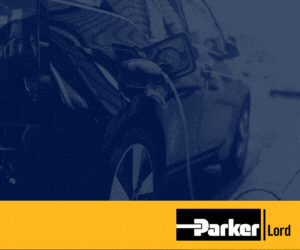Motor mode programming made easy

(Photos by the author)
Synchronising motors and controllers is a key aspect of EV powertrain development, and Friwo’s electrification kits come with an algorithm that automates that potentially tricky process while enabling vehicle developers to program in their own modes to tailor motor output for economy or performance, for example (writes Peter Donaldson).
Motors and controllers need synchronising to ensure that the controller switches the field coils on and off at the right times to interact with the fields from the permanent magnets, for example, to spin the motor at the desired speed and in the right direction.
Ben Winstanley from UK distributor Haredata Electronics explained that the Friwo motors, controllers and batteries can be adapted to electrifying existing light IC-engined vehicles as well as new machines designed from scratch to use electric power. Target vehicle types include e-bikes, scooters, go-karts, golf buggies and tuk-tuks. The company displayed a Brekr Model B e-bike on its stand at the London EV show in December.
The Friwo motor controller with its self-learning algorithm is adaptable to most brushless direct current motors. Winstanley said, “Once it’s connected to the motor, you run the software and it will basically map the motor to the controller. Then you can wire in your inputs for digital and analogue signals, then teach it what to do at what input value.”
Winstanley demonstrated the procedure at the London EV Show in December using a self-contained demonstration kit consisting of a battery, a motor and a controller along with an embedded computer running the synchronisation algorithm.

The algorithm energises each field coil in sequence to force the rotor to turn, holding it in position for a short time at each step. A Hall effect sensor measures the rotor’s position each time. “That means you power on the magnetic field and hold it there, power on the next magnetic field, hold it there and so on. You can tell it how many times to do that; on average we say about six,” Winstanley said.
From that process the controller learns the distance between the poles, which it needs to know to synchronise its switching. “If you switch too early the motor won’t spin, if you do it too late it’s going to spin at the wrong speed, but if you do it at the right time you have constant torque, stable speed and it is very controllable,” Winstanley said.
The algorithm also enables the vehicle developer to program in up to four drive modes, and Winstanley explained that with the Brekr Model B the analogue input will speed up to 25 kph in drive mode one, drive mode two will double that to 50 kph, drive mode three will take it to 80 kph, and in drive mode four it will steadily climb to 100 kph.
Haredata has also programmed in a mode that provides a boost of around 15%. “So from a standing start you will see it go up to 100-115 kph and then step back down,” Winstanley said.
The controller can also use flux weakening to allow the motor to reach higher cruising speeds. The motor in the Brekr Model B, for example, is rated at 5000 rpm, but Winstanley said it can safely spin up to 7000 rpm, although magnets will fly off at around 8000-9000 rpm.
The other Friwo components in the Model B drive system are the battery and its charger. The battery is a 48V, 40 Ah unit that provides a range of 50-80 km, which can be doubled by fitting a second battery. The 500 W charger is small enough to fit into a backpack and will put a full charge into the battery in 3 or 4 hours, Winstanley said.
ONLINE PARTNERS


























